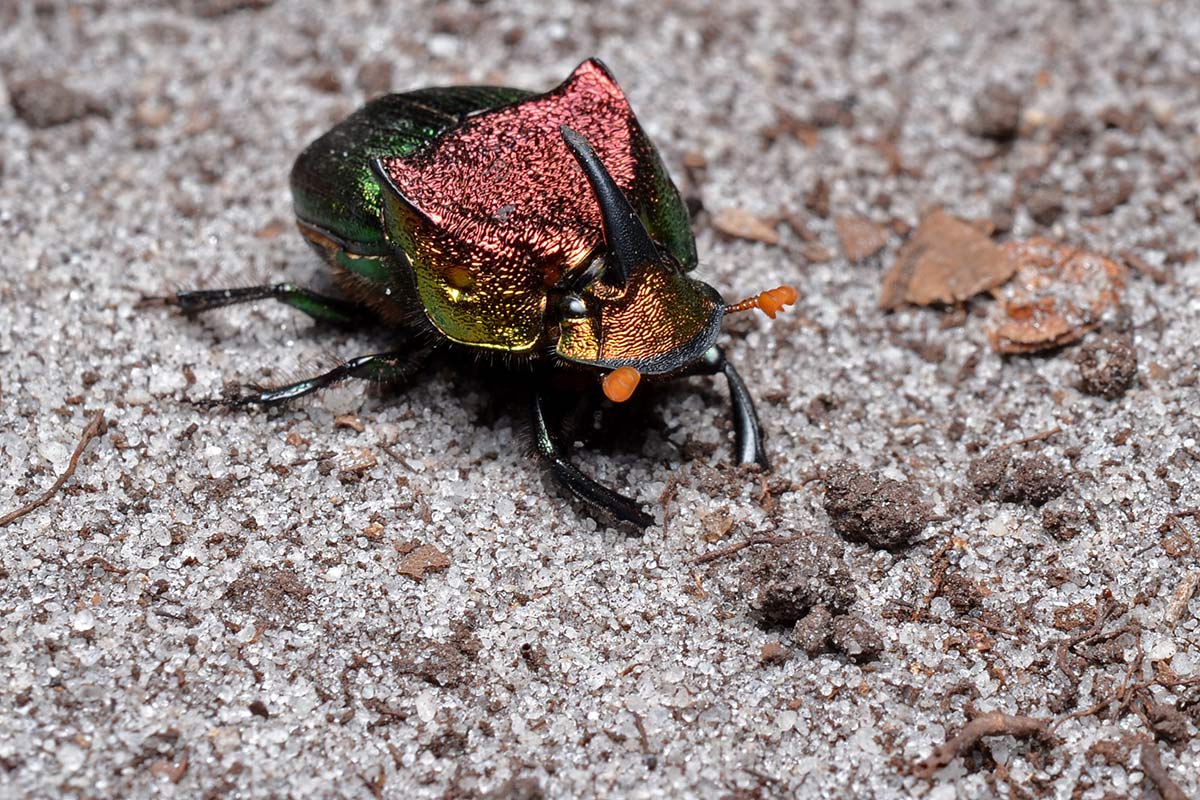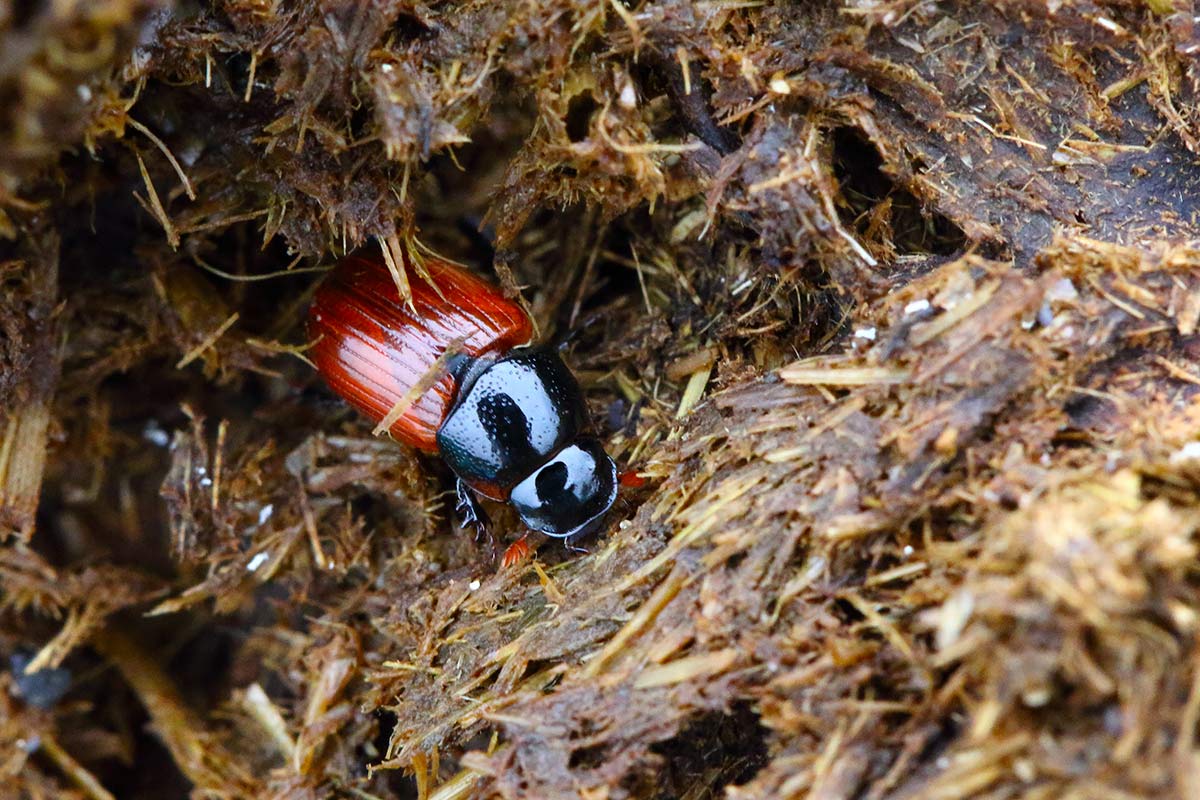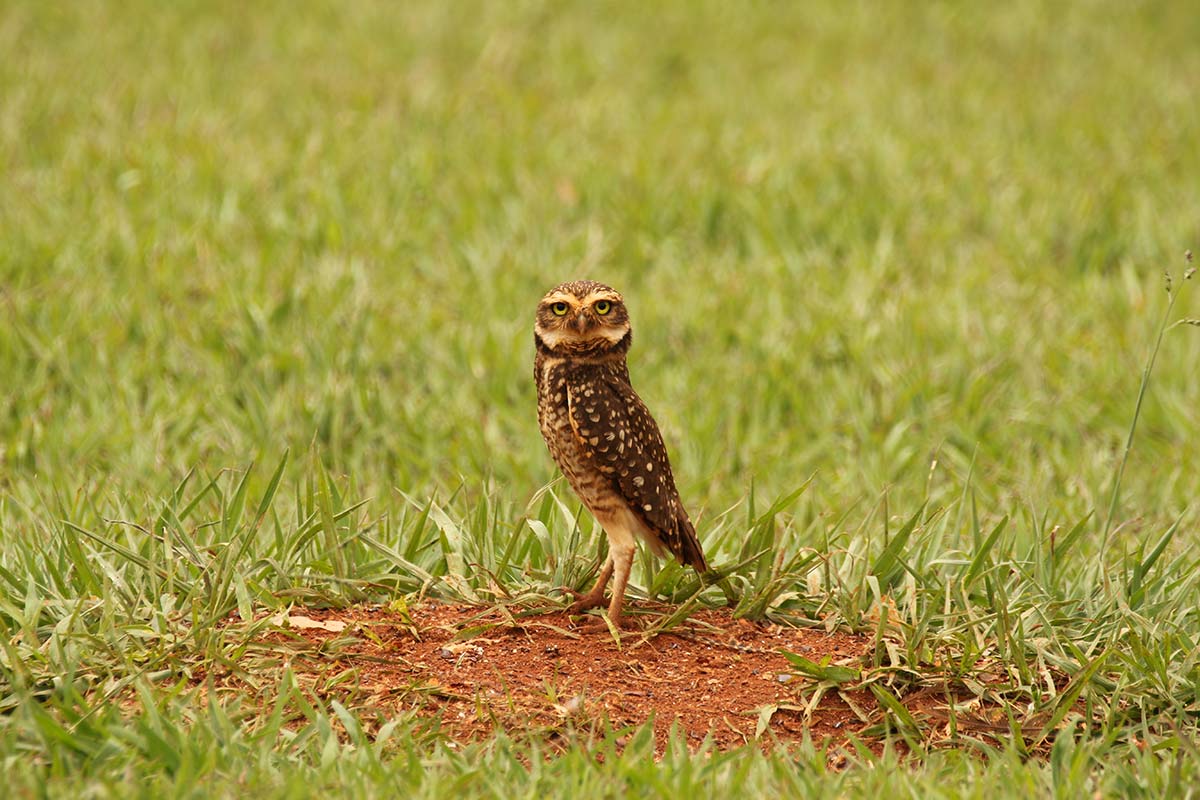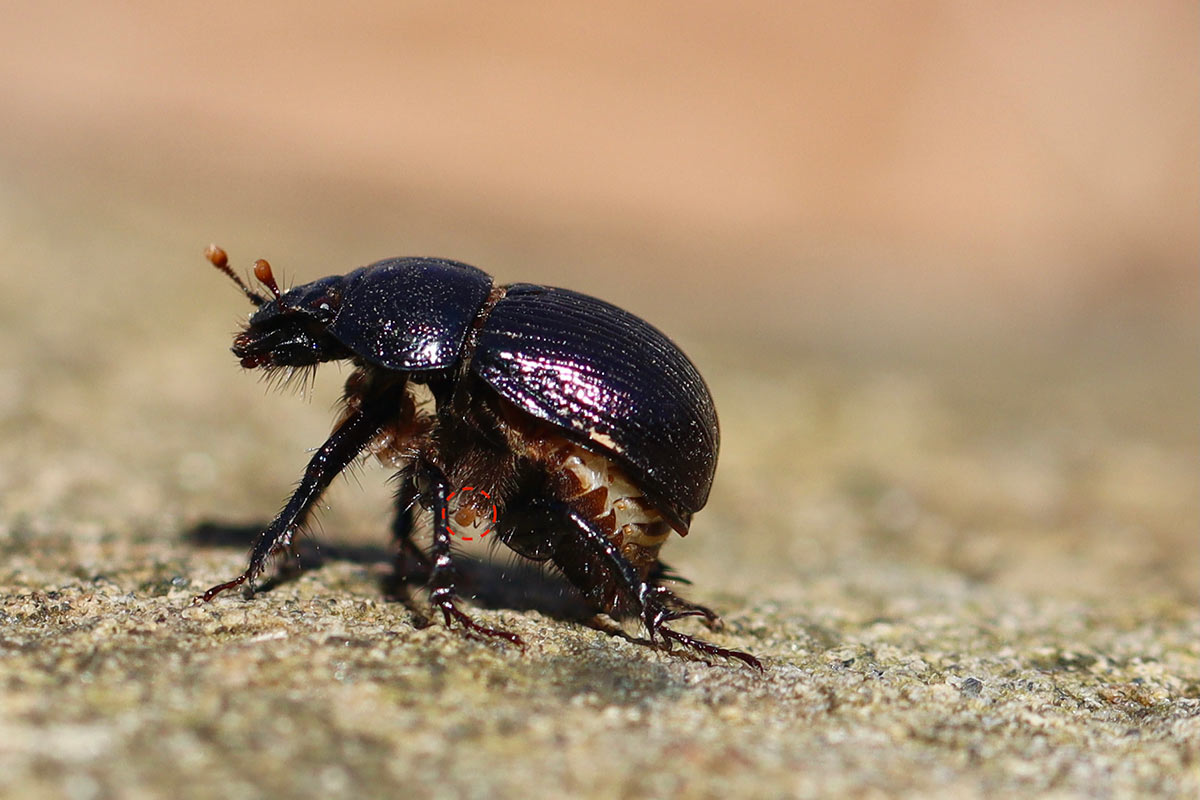When it comes to precious resources for insects, dung may not be the first thing to come to mind. Compared to nectar from wildflowers, or host plants for butterflies and moths, dung can be taboo for even the most insect-enthusiastic audiences. But dung, and the insects who rely on it, are key factors that enable nutrient cycling, biodiversity, and healthy ecosystems.
Why do some insects feed on dung?
Dung can be a microhabitat for hundreds to thousands of insects seeking a food source and shelter. Dung has moisture, and even though it has already been digested, many animals are still able to get energy by eating it.
First to arrive at fresh dung are coprophages: animals that feed on dung. Insect coprophages are primarily beetles and flies, although it is not uncommon to also see butterflies, such as the viceroy (Limenitis archippus), using their proboscis to acquire scarce nutrients from dung that are critical for reproduction, but not found in nectar.
Coprophages are dung pioneers, creating additional habitat opportunities for coprophilous, or “dung-loving”, organisms like predatory beetles, parasitic wasps, and even vertebrates like birds that will scour the dung for insect larvae.
Of the coprophages, none are as devoted to dung as the dung beetle. Dung beetles dine on dung, reproduce on dung, and use dung as their nurseries.

Where do dung beetles live?
Dung beetles are diverse and widespread, with over 9,500 described species spanning all continents (except Antarctica). They are found in nearly all terrestrial habitats, from forests to deserts to farmland–some species can even be found in dog poop in your backyard.
Many dung beetles are generalists and will use a wide variety of dung, although most have a preference for herbivore and omnivore dung. Dung pats, the large pieces of dung made by grazing mammals like cows and bison, are a popular resource.
How do dung beetles find dung?
Within minutes of a dung pat being deposited, downwind dung beetles locate it by smell using their antennae. Smaller dung beetles can detect and fly to a dung pat several hundred feet to miles away, while some of the larger species can fly up to 30 miles to locate a dung pat.
How much dung does a dung beetle eat?
Dung beetles are experts at breaking down dung and integrating it back into the soil.
Both adult and larval dung beetles feed on dung. Dung beetle larvae have strong jaws that let them chew up undigested plant material. Adults have weaker mouthparts, better suited for soft decomposing matter, like the liquids in a dung pat.
The speed at which they break down a dung pat depends on the species present, but it can take as little as a day or up to several weeks. For some species, a single dung beetle can bury over 250 times their own mass in one night.
What are the different types of dung beetles?
Dung beetles can be sorted into three groups based on how they use dung.
Rollers
The most famous group, the “rollers”, separate a fragment of dung, use their saliva to pack it into a sphere, and roll it in a straight line (using the night sky to help with navigation) away from a dung pat to evade competition. They excavate a shallow tunnel to bury the dung ball in, in which they deposit their eggs. The larvae feed on the dung and pupate in the dung ball before emerging as an adult, ready to find a dung pat of their own.
Rollers are excellent seed dispersers. Some seeds can safely pass through an herbivore’s digestive system and end up in the dung, and then into a beetle’s dung ball. This way, dung beetles can relocate seeds several hundred feet from where they were initially deposited. Plus, the dung ball itself serves as fertilizer!

Tunnelers
Similar to rollers, “tunnelers” take a fragment of dung and form a dung ball that they will lay their eggs in. However, unlike rollers, tunnelers burrow directly beneath the dung pat, often at much deeper depths. These tunnels can range from a few inches to two feet deep!
Tunnelers help promote healthy soil and plant communities by integrating the dung directly into the soil. Dung beetle larvae consume around 30% to 40% of the dung ball, and the rest goes to plants or other soil organisms. The tunnels also loosen up compacted soil, and provide paths for water to drain deeper into the ground. This not only helps nutrients mix into the soil, but also helps to filter runoff and prevent floods!

Dwellers
“Dwellers” lay their eggs within or around the dung pat. Their larvae tunnel into the dung pat and freely consume the dung.
Dwellers might not be as efficient at integrating the dung directly into the soil. However, by consuming and burrowing in dung, they still play a role in the decomposition process. They are also an important food source for vertebrates like birds that peck through dung pats for larvae.

Why are dung beetles important?
Dung beetles are a key component of a healthy ecosystem in both natural and agricultural areas. The reason is pretty simple: without dung beetles, you end up with a lot more dung sitting around on the ground, for a much longer time.
The longer a dung pat sits on the surface, the more problems may arise. For example, the nitrogen in dung can instead enter the atmosphere as ammonia, which, in excess, can lead to atmospheric acidification and respiratory illnesses in humans. When dung beetles are present, most of that nitrogen gets mixed into the soil, and then absorbed by growing plants.
Dung beetles also help reduce pest and parasite populations. As they consume and break up dung, they create less habitat opportunities for pest populations that rely on moisture and dung for breeding.
By accelerating dung decomposition and integrating nutrients back into the soil, dung beetles are estimated to save farmers and ranchers up to $380 million per year.
Are dung beetles endangered?
Dung beetles in many regions across the world are declining in population. This includes many species here in the United States, although there are no dung beetles on the Endangered Species List, yet.
There are several likely factors contributing to declines, from habitat loss and fragmentation to climate change, but one of the primary threats actually comes from within the dung itself.
Dewormers used on pets and livestock are important tools that help keep the animals we care for healthy, but they are also highly lethal to dung beetles. When an animal is treated with dewormers, like ivermectin, 98% of the active ingredient can pass through the animal and be deposited in the dung. When dung beetles eat and find shelter in dung, they can be exposed to these dewormers, which can lead to lower reproductive success and survival.
With the decrease of dung beetles comes delays in dung decomposition. As a result, pest and parasite outbreaks can worsen, counteracting the purpose of using the pesticide. Aside from the impacts on dung beetles, parasites can become resistant to dewormers when they are overused.
Additionally, firefly larvae, and many other insects that dwell or develop in soil, can be exposed to harmful levels of these chemicals. Some dewormers can even be taken up into plants and expressed through pollen and nectar, or contaminate floral surfaces as dust, impacting essential pollinators like bees.

How can farmers and ranchers help protect dung beetles?
Ranches and livestock farms provide important resources for native dung beetles. For example, native dung beetles in prairies have been able to switch to using cattle dung, after the bison they used to rely on were driven to near extinction (in large part due to the U.S. government's efforts to subjugate the many indigenous Americans that used bison in their diets and cultures). However, a dung pat can become a fatal trap for dung beetles if contaminated with dewormers or other harmful pesticides.
If you are a rancher or livestock farmer looking to support dung beetles, integrated pest and parasite management (IPM or IPPM) offers methods that will help control parasites while protecting dung beetles.
For resources and advice on integrated pest management, check out your local university extension program! Many states will have great advice for supporting the dung beetles (and other beneficial insects) native to your region, such as:
- Dung-Beetle Friendly Parasite Control by WA State University Kittitas County Extension
- Dewormer/Insecticide Best Management Practices For Conservation Grazing by the MN Dept. Natural Resources
- Dung Beetles Aid in Reducing Flies and Gastrointestinal Parasites in Pastures by Cornell Cooperative Extension
- Fly Control Considerations for Cattle on Pasture by SD State University Extension






